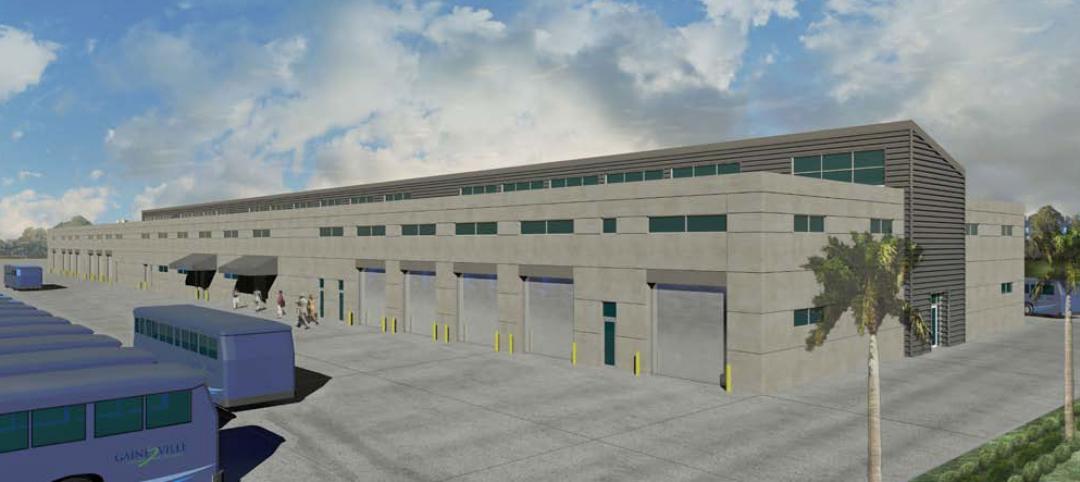The American Institute of Architects (AIA) today announced its “punch list” for Congress that, if completed, will ignite the construction economy by spurring much needed improvements in energy efficiency, infrastructure and resiliency and create jobs for small business
“America needs to create more jobs, to strengthen communities, and find help for millions of young people to succeed in the new economy,” said Robert Ivy, CEO of the American Institute of Architects, "so we've created a punch list—a term that enumerates unfinished items in a construction contract."
“The AIA’s Congressional punch list will help Congress satisfy its implicit contract with the American people to spur growth and create jobs,” Ivy said. “Our legislative agenda reflects the interests of our members, which not so coincidentally reflects the priorities of the American people.”
“America needs to create more jobs, to strengthen communities, and find help for millions of young people to succeed in the new economy,” said Robert Ivy, CEO of the American Institute of Architects. A punch list is a list of actions that need to be taken to satisfy the terms of a contract.
“The AIA’s Congressional punch list will help Congress satisfy its implicit contract with the American people to spur growth and create jobs,” Ivy said. “Our legislative agenda reflects the interests of our members, which not so coincidentally reflects the priorities of the American people.”
The AIA’s Punch List for Congress:
1. Re-enact Expired Energy Efficiency Tax Incentives
Congress left town in December without extending several important tax incentives that expired on New Year’s Day. Of most significance to the design and construction industry is the expiration of a tax break enacted in 2005 for energy efficient commercial buildings. The 179D deduction allowed building owners to claim a tax deduction of $1.80 per sq. ft. of building area to install systems that reduce the total energy and power costs by 50 percent or more when compared with a reference building. As Congress continues to debate long-term tax reform, it can boost the economy and create jobs today by reinstating this deduction.
2. Help Businesses by Reforming Government Procurement Rules
More than 97 percent of architecture firms employ 50 or fewer people; every project they design leads to job opportunities for millions of construction workers. But too many laws and regulations block innovative solutions that maximize the government’s return on its investment. Congress must reform procurement rules so that architects and designers can deliver projects that are safe, productive and sustainable. In 2014, the AIA is aggressively pushing for passage of The Design-Build Efficiency and Jobs Act of 2013 (H.R. 2750), introduced by Rep. Sam Graves (R-MO) in July, which would reform of the design-build contracting process so that more design and architectural firms can bid on federal contracts without fear of losing money in the process.
3. Invest in the Next Generation of Design Leaders
Millions of young people aspire to help their communities build a better future – but a lack of opportunity and the crushing cost of education hold them back. As a result, the design and construction industry faces a severe shortage of talent, at exactly the moment we need to start rebuilding for the future. The AIA urges Congress to pass the proposed National Design Services Act (NDSA), which will give architecture students the relief from crushing student loan debt as that granted young lawyers, doctors and others – in return for pro bono community service.
4. Invest in Infrastructure
Just as the Capitol dome, the symbol of American democracy is undergoing a multi-year renovation, so too must our nation’s infrastructure. Congress should pass a multi-year transportation reauthorization, which would allow for long-term planning that not only repairs roads and bridges but helps communities prosper; and enact a National Infrastructure Bank to finance the design, construction and repair of buildings and other vital infrastructure. Such moves would help free up capital for private sector building projects, and new ways to invest in public sector buildings, providing jobs in the short term and a more competitive economy in the long run.
5. Pass a Common-Sense Energy Efficiency Bill
Last session, the Senate Energy and Natural Resources Committee approved a bipartisan bill, the Energy Savings and Industrial Competitiveness Act of 2013 that would encourage families, businesses and the government to save energy. The Senate should take up the legislation, sponsored by Ohio Republican Rob Portman and New Hampshire Democrat Jeanne Shaheen, in 2014, and oppose efforts by the fossil fuel industry to repeal existing policies that save energy.
6. Help Communities Weather Natural Disasters
Each year, natural disasters kill tens of thousands of people worldwide and inflict billions of dollars in damage. Many parts of the United States are still recovering from tornadoes and hurricanes like Superstorm Sandy. Congress can help communities fortify themselves from such disasters by passing the Safe Building Code Incentive Act, introduced by New Jersey Democratic Senator Robert Menendez and Florida Republican Congressmen Mario Diaz-Balart, which encourages states to voluntarily adopt and enforce nationally recognized model building codes.
About The American Institute of Architects
Founded in 1857, members of the American Institute of Architects consistently work to create more valuable, healthy, secure, and sustainable buildings, neighborhoods, and communities. Through nearly 300 state and local chapters, the AIA advocates for public policies that promote economic vitality and public well being. Members adhere to a code of ethics and conduct to ensure the highest professional standards. The AIA provides members with tools and resources to assist them in their careers and business as well as engaging civic and government leaders, and the public to find solutions to pressing issues facing our communities, institutions, nation and world. Visit www.aia.org.
Related Stories
| Dec 4, 2012
Greenhorne & O’Mara signs letter of intent to join Stantec
Acquisitions of C3TS and Architecture 2000 also completed.
| Dec 4, 2012
Sto Corp. announces new distributor in the Carolinas
Company will now have coverage in several parts of North Carolina.
| Dec 4, 2012
Wirtz Beverage Illinois’ corporate headquarters completed
WBI Center, a new state-of-the-art facility, is designed by Ware Malcomb.
| Dec 4, 2012
Wagner joins Ghafari as Manager of Structural Engineering
Wagner comes to Ghafari from Walter P Moore, where he served as a principal, chaired the construction administration task force and led the design of numerous projects ranging in size from $10 million to $70 million.
| Dec 4, 2012
City of Gainesville to break ground on $33 million bus fleet maintenance and ops facility
The 140,000-sf facility will include dispatch, administrative and maintenance facilities.
| Nov 28, 2012
Project team to showcase design for first mixed-use retail center of its kind in Mexico City
Project reaching construction milestone, offering national model for urban development in Mexico.
| Nov 28, 2012
Cummins announces ratings classification for data center power systems
The Data Center Continuous ratings span the range of Cummins Power Generation’s high horsepower diesel generator sets, from 1 MW up to 2.5 MW, and will apply to both 50 Hz and 60 Hz configurations.
| Nov 28, 2012
Francis Cauffman appoints Stainbrook Director of Higher Education
Stainbrook has 16 years of experience as a strategic planner and urban designer working on complex projects on- and off-campus.
| Nov 27, 2012
SFIA releases technical guide for cold-formed steel framing products
The 114-page book covers both structural and non-structural applications, including section properties of SFIA member product profiles, and complete load and span tables for most applications.
| Nov 21, 2012
Architecture Billings Index positive for third straight month
All regions reporting positive business conditions















